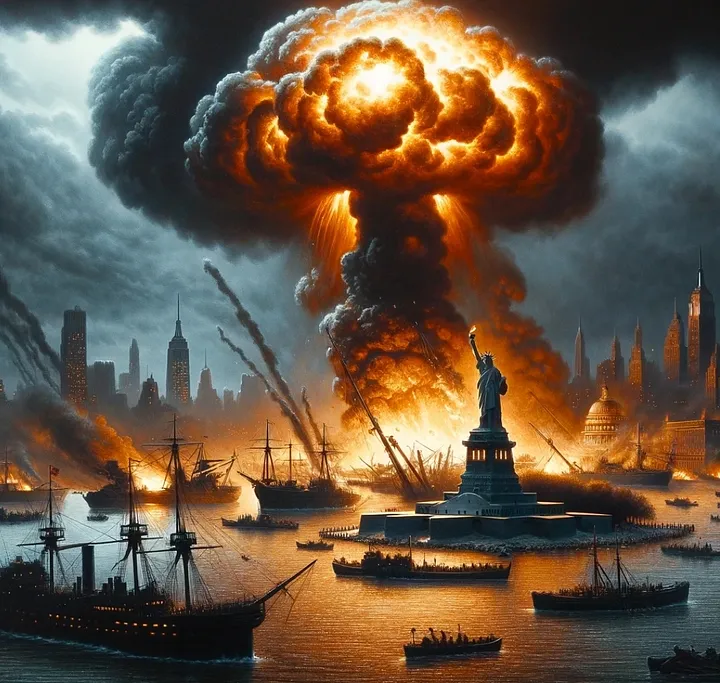The Black Tom explosion, an event shrouded in mystery and conspiracy, remains one of the most significant yet overlooked incidents in American history. In the early hours of July 30, 1916, an act of sabotage on Black Tom Island in New York Harbor sent shockwaves across the nation, both literally and metaphorically.
The Attack
Black Tom Island, a key munitions depot, was targeted by German saboteurs during World War I. At the time, the United States, still neutral, was supplying munitions to the Allies. This made Black Tom a prime target for disruption. The explosion, resulting from incendiary devices planted by the saboteurs, was so powerful it caused damage worth an estimated $20 million at the time (around $500 million today). It was reported that at least five people, including a baby, were killed due to the explosion.
The Saboteurs
The intricate plot was linked to German agents, including Michael Kristoff, an immigrant who later admitted to working for them. Key figures in this sabotage were Kurt Jahnke and Lothar Witzke, along with Michael Kristoff, who infiltrated the lightly-guarded depot and executed the attack.
Impact on the Statue of Liberty
One of the lesser-known effects of the explosion was its impact on the Statue of Liberty. The force of the blast caused significant damage to the statue, particularly to its torch, which has been closed to the public ever since.
The Aftermath
Following the explosion, law enforcement faced challenges in identifying and capturing the saboteurs. The limited capacity of the U.S. intelligence and security services at the time made the response more difficult. However, the incident played a significant role in shaping American policies and attitudes, contributing to a shift in public opinion against Germany and paving the way for the U.S. to enter World War I.
Legal and International Ramifications
The aftermath saw several legal battles, including a lawsuit by the Russian government against the Lehigh Valley Railroad Company for lax security. The case of the Black Tom explosion was eventually brought before the Mixed Claims Commission at The Hague, leading to a settlement with Germany, although the final payments were not made until 1979.
Conclusion
The Black Tom incident stands as a testament to the far-reaching impacts of espionage and sabotage, highlighting vulnerabilities in national security and the complexities of international relations during wartime. Its ramifications were felt not just in the immediate destruction but in the shaping of national policies and international diplomacy for decades to follow.
References
For further details and a comprehensive understanding of the Black Tom incident, the following sources provide extensive information:
Wikipedia’s article on the Black Tom explosion.
The FBI’s detailed account of the 1916 Bombing.
A historical perspective from HISTORY.
All That’s Interesting’s coverage of the bombing.
The Council on Foreign Relations’ retrospective.
The U.S. National Park Service’s report on the incident.
Intelligence.gov’s examination of the explosion.












